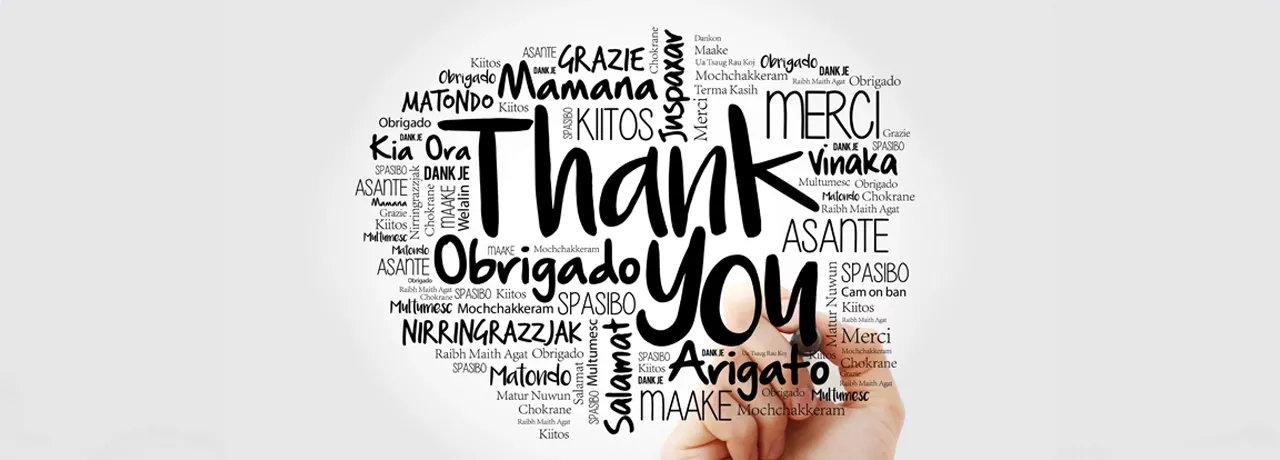
How Gratitude Humanizes the Workplace and Improves Team Culture
November 15, 2022
By Paula Ambrozic
This November, we’re celebrating National Gratitude Month by exploring how gratitude can help us humanize the workplace . What does that mean, exactly? Simply, it means building a culture that recognizes that we are all humans, that work is a huge part of our lives, and that our work experience is often an emotional experience. How we treat one another at work matters — a lot.
This November, we’re celebrating National Gratitude Month by exploring how gratitude can help us humanize the workplace. What does that mean, exactly? Simply, it means building a culture that recognizes that we are all humans, that work is a huge part of our lives, and that our work experience is often an emotional experience. How we treat one another at work matters — a lot.
We’re not robots. We’re humans coming together over a shared purpose and working together toward shared goals. Acknowledging our humanity helps us build stronger professional relationships, improves communication and collaboration, and creates a more positive employee experience. Time and again, research has shown that gratitude in the work environment can help move the needle and there are a number of ways to incorporate acts of gratitude into the workday. But gratitude alone isn’t enough. Your organization needs to adopt a host of behaviors and practices to change your culture, long term.
As Harvard Business Review reminds us, organizational culture is everyone’s responsibility. With that in mind, here are some best practices around gratitude that every team member — from new hires to seasoned supervisors to business leaders — can use to help humanize the workforce.
For leaders:
Leaders can have the biggest impact on organizational team culture when they lead by example.
Show gratitude. When employees feel seen and appreciated at work, it shows. This means that a simple “thank you” or “I appreciate your hard work” can help humanize the workplace. The American Psychological Association found that 93% of employees “who reported feeling valued said that they are motivated to do their best at work and 88% reported feeling engaged.” And this impacts retention, too. Among that group, only 21% were planning to look for a new job in the year that followed.
Reward accomplishments and contributions. Another effective way to express gratitude and help employees feel valued is with rewards and recognition. Using a purpose-built platform like Connects to recognize employees throughout the employee journey will help boost engagement, foster community, and improve morale.
Communicate the purpose. When teams understand an organization’s goals and vision, they get energized and work together for a common purpose. The idea that “we’re all in this together” inspired community and connections during the COVID-19 crisis, and overcoming that challenge was our shared purpose at that time. Employees need to rally around a purpose to feel engaged and motivated. Give them that, and you’ll see the best in humanity come out.
Promote diversity and inclusion. Support everyone and all the differences they bring to the table. And don’t just say it; do it. This kind of change requires leaders to feel empathy, take action, and be accountable. Here are a few of the many ways to build a more inclusive workplace.
Build connections and community. With some of us working remotely and some on-site, we all need to build connections that are meaningful. After all, most of us spend a third of our days at work. Provide your employees with a place where they can connect, support and thank each other. Employee engagement platforms like Connects offer the perfect way to foster or cultivate peer relationships and promote a strong team culture.
Encourage and facilitate collaboration. No one person can do it all. In a family dynamic, no matter the structure, everyone pitches in to do their part so the machine runs much more smoothly. A workplace requires similar cooperation and interdependence to fulfill its collective potential.
Allow mistakes. Innovation only happens when people take risks and try something new. Create a culture where it's not just okay to be human, it’s accepted and understood as part of the journey. Again, leaders can embody the example by acknowledging their own errors while also allowing others to occasionally make a mistake. The bottom line is that humans make mistakes and many of our mistakes help us learn valuable lessons that move us closer to our goals. Learn from those lessons and move on.
For employees:
Employees who are not in leadership roles contribute to their company culture through their everyday actions and attitudes.
Acknowledge your co-workers for their contributions. Showing gratitude to your co-workers is as important as receiving recognition from leaders. Express your appreciation when a teammate helps you get a project over the finish line or applaud how they knocked it out of the park in a sales presentation. Two of the most powerful words anyone can say are, “Thank you.” Use them liberally.
Build relationships. Get to know your co-workers and what’s important to them. These connections make your teammates more relatable, can improve your communication, and tend to make work more fun. For instance, you might ask your co-workers about their hobbies and discover a particular passion they have or a goal they are working toward. This gives you something to ask about periodically and you might even find some common ground that you may not have known about previously. Connecting with co-workers over their interests helps build trust and deepen your working relationships.
Personalize your communication. Add personal greetings to business correspondence. It only takes a few minutes to add a quick personal greeting or a touch of warmth to your emails. This can be as basic as “I hope you had a good weekend” or as specific as “How was your trip to Hawaii?” Adding personalized touches can make any communication more enjoyable to receive.
Gratitude Inspires Human Beings
In our quest for better employee retention, improved engagement, and overall levels of productivity and well-being, we often overlook the impact of everyday interactions in the workplace that can give us a competitive advantage. Putting gratitude in the driver’s seat can help every member of your organization humanize the workplace, regardless of their career level or job title. When everyone does their part, everyone benefits. Making these habits part of your everyday work experience can put you well on your way to building a strong team with a culture of gratitude.




